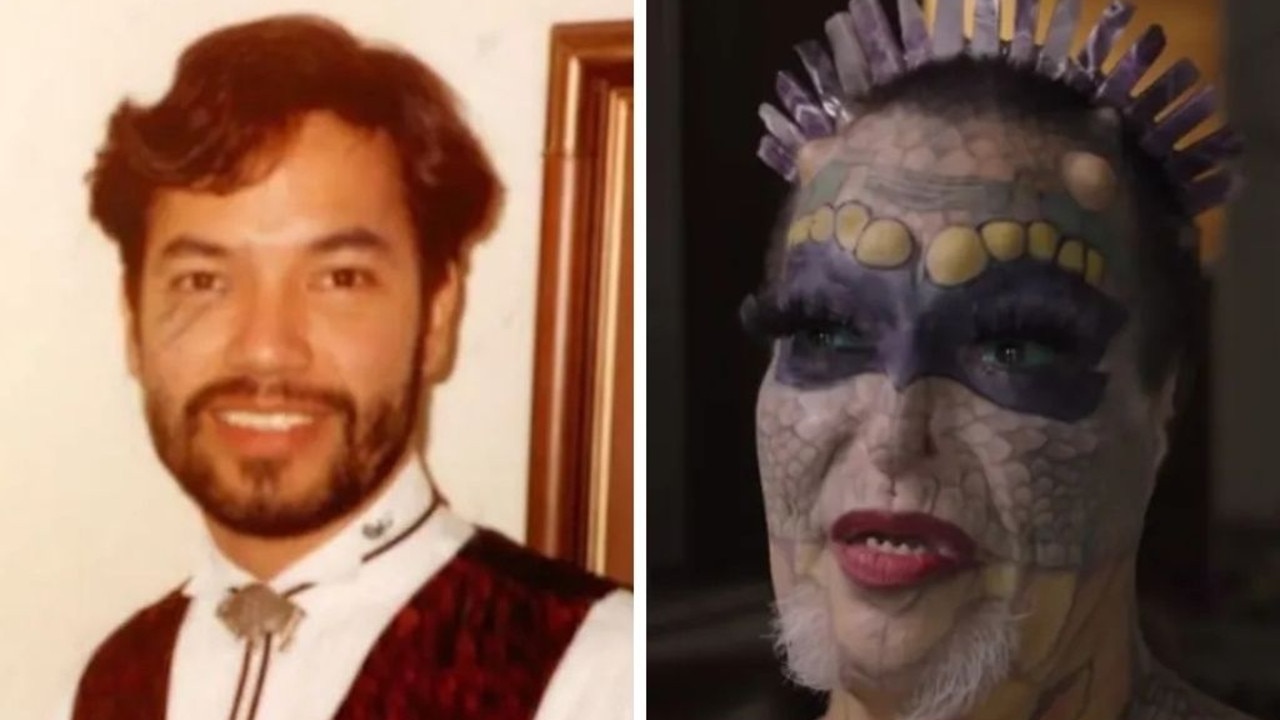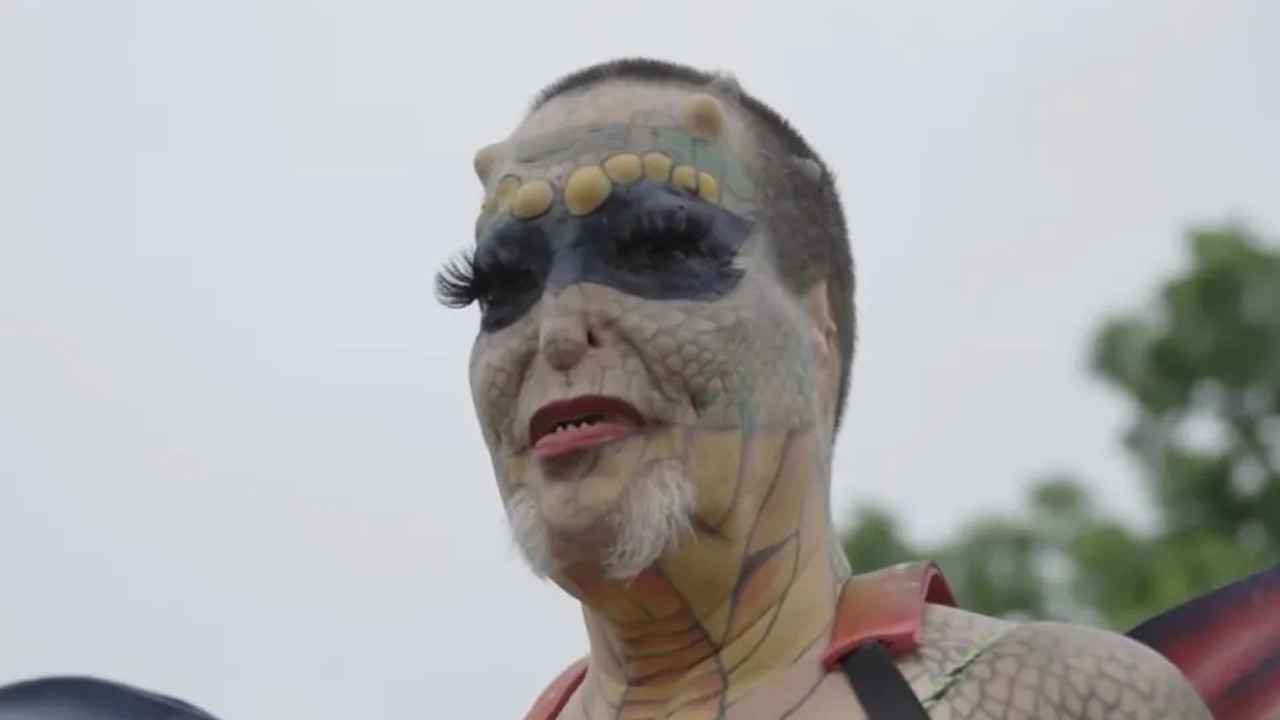Tiamat Legion Medusa, a name that has become synonymous with extreme transformation, has captured global attention through their remarkable journey of self-expression. Once a banker living an ordinary life, Tiamat has undergone a series of dramatic body modifications to embody a unique, non-human identity: a “genderless dragon.” Their story is one of resilience, personal discovery, and the pursuit of living authentically, though not without facing intense scrutiny and polarized opinions along the way.
The Transformation: From Banker to Dragon
Tiamat Legion Medusa’s life began in a setting far removed from their current appearance and identity. Before embarking on their transformation, Tiamat led a conventional life, working in the corporate world as a banker. Yet, beneath this seemingly traditional exterior, there was a deep and abiding desire to break free from societal norms and embrace a more authentic expression of self.
This transformation has been anything but subtle. Tiamat has undergone extensive body modifications, including tattoos that cover the majority of their skin, horn implants on their forehead, and piercings. Additional procedures, such as ear reshaping, tongue splitting, and the removal of their nose cartilage, have contributed to their dragon-like appearance. For Tiamat, these physical changes represent not only a departure from humanity but also the embodiment of their identity as a “genderless dragon.”

A Journey of Identity and Self-Expression
Tiamat’s transformation goes far beyond the physical changes. It is a declaration of independence from traditional notions of gender, humanity, and societal expectations. Identifying as a genderless entity, Tiamat has chosen to reject the binary constructs of male and female and instead embrace an identity that aligns with their unique vision of themselves.
In interviews and social media posts, Tiamat has shared that their transformation is also a reflection of overcoming a painful past. They have spoken openly about experiencing abandonment and rejection in their early life. These experiences shaped their worldview and fueled their desire to break free from societal judgment and embrace their individuality fully.
“I am no longer a human being,” Tiamat has explained in public statements. “I have left my human side behind to become a reptilian creature. I’m happy and proud to live my truth.”
The Reactions: Mixed Opinions and Online Commentary
Unsurprisingly, Tiamat’s transformation has sparked a wide range of reactions from the public. Social media platforms, where Tiamat shares their journey through photos and videos, have become a battleground of opinions.
Supporters often praise Tiamat for their bravery and unapologetic self-expression. One commenter on Instagram wrote, “Being human hasn’t been kind to them. Let them be happy now. They are wonderful!” Others echo this sentiment, emphasizing that everyone has the right to live authentically.
Another commenter added, “Why so much hate? Let them be who they want to be. As long as they’re happy, there’s no problem. Right? God is the only one who can judge them.”
However, not all reactions have been positive. Critics frequently express discomfort or disapproval, with some arguing that Tiamat’s transformation goes too far. Despite the negativity, Tiamat remains steadfast in their mission to live authentically, stating that their happiness is not contingent upon the opinions of others.
The Symbolism Behind the Transformation
For Tiamat, the transformation is rich with personal and symbolic meaning. They have explained that becoming a dragon is not merely an aesthetic choice but a spiritual and emotional journey. The dragon, a mythical creature often associated with power, transformation, and resilience, serves as a fitting symbol for Tiamat’s own evolution.
The name “Tiamat” itself is derived from ancient mythology, referencing a Babylonian goddess often depicted as a primordial dragon or serpent. By adopting this name, Tiamat aligns themselves with a powerful symbol of rebirth and creation, underscoring their journey of self-reinvention.
Moreover, their rejection of gender labels and human identity challenges societal norms and invites broader conversations about acceptance, individuality, and the fluidity of identity.
The Challenges of Living Authentically
While Tiamat’s journey is a testament to resilience and self-determination, it has not been without its challenges. Beyond facing public scrutiny and online criticism, Tiamat has encountered practical difficulties in daily life.
Interviews with Tiamat reveal that navigating the world as a visibly unconventional individual often brings challenges, from receiving stares in public to dealing with discrimination. Yet, they maintain that the joy and fulfillment they experience from living authentically far outweigh any negativity.
“It’s not always easy,” Tiamat has admitted. “But it’s worth it. I am living my truth, and that’s what matters most.”
The Role of Social Media
Social media has played a significant role in Tiamat’s journey, providing a platform to document their transformation and connect with a global audience. Platforms like Instagram have allowed Tiamat to share their story with thousands of followers, posting photos and videos that showcase their dramatic changes over time.
Through these platforms, Tiamat has not only found a supportive community but also become a source of inspiration for others who feel marginalized or misunderstood. Messages from followers often express gratitude for Tiamat’s openness and courage, with many stating that their story has encouraged them to embrace their own identities more fully.
A Broader Conversation on Identity and Acceptance
Tiamat’s story is part of a larger cultural conversation about identity, self-expression, and acceptance. In a world where individuality is increasingly celebrated, stories like Tiamat’s highlight both the progress society has made and the challenges that remain.
Their transformation invites reflection on the ways in which societal norms and expectations shape perceptions of beauty, identity, and belonging. It also raises questions about the boundaries of self-expression and the importance of creating a world where everyone feels free to live authentically.
While not everyone may understand or agree with Tiamat’s choices, their journey serves as a reminder of the power of individuality and the courage it takes to live life on one’s own terms.

Conclusion
Tiamat Legion Medusa’s transformation into a “genderless dragon” is a story that defies convention and challenges societal norms. Through extensive body modifications and a deep commitment to living authentically, Tiamat has become a symbol of resilience, individuality, and the pursuit of personal truth.
While their journey has sparked mixed reactions, it also serves as a powerful example of the importance of self-expression and acceptance. Tiamat’s story reminds us that happiness and fulfillment come from embracing who we truly are, even in the face of criticism or misunderstanding.
As conversations about identity and acceptance continue to evolve, Tiamat’s journey stands as a testament to the transformative power of authenticity and the strength it takes to carve one’s own path. Whether seen as a dragon, a trailblazer, or simply a human living their truth, Tiamat Legion Medusa’s story leaves an indelible mark on the ongoing narrative of individuality and self-discovery.


